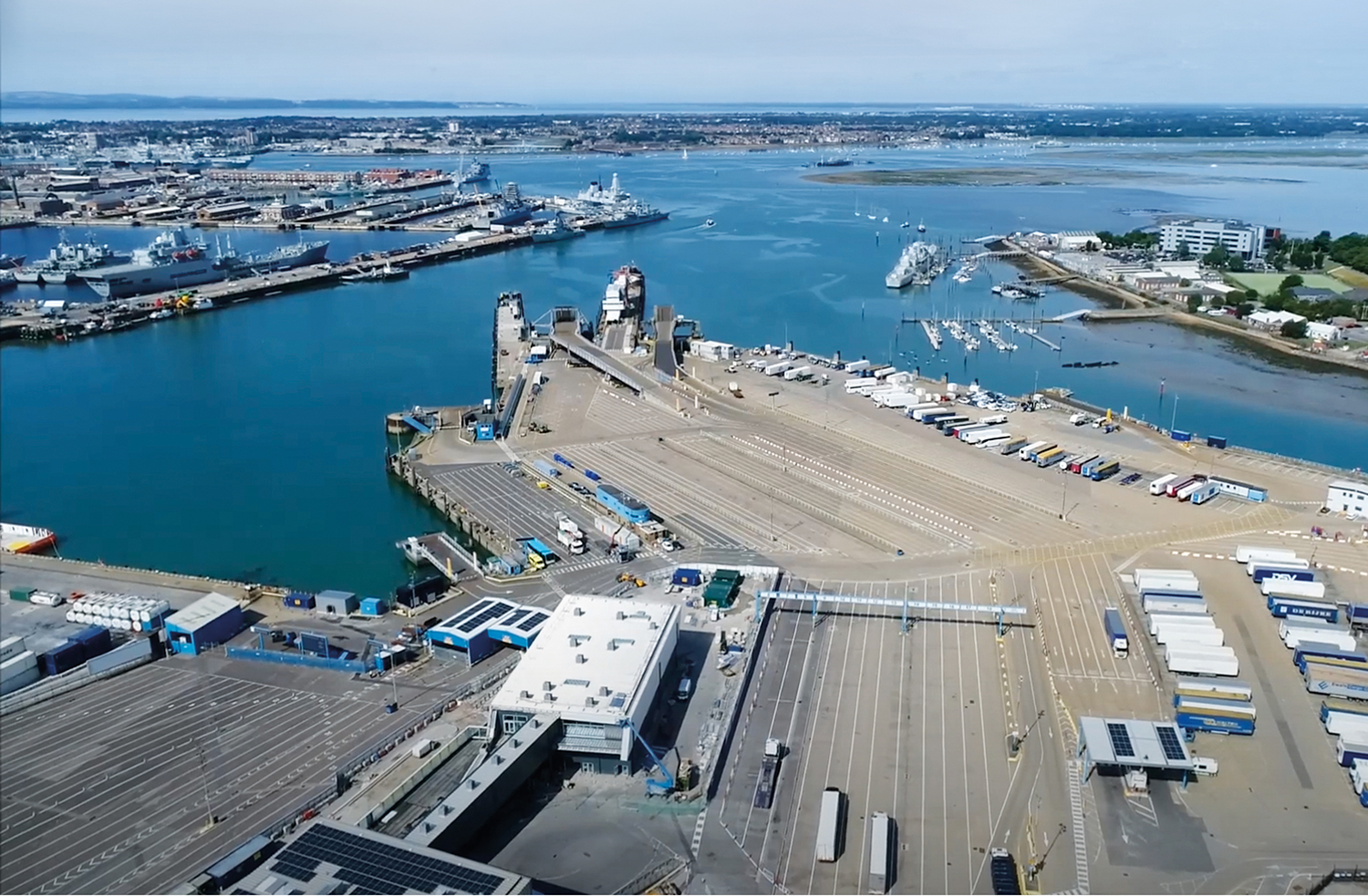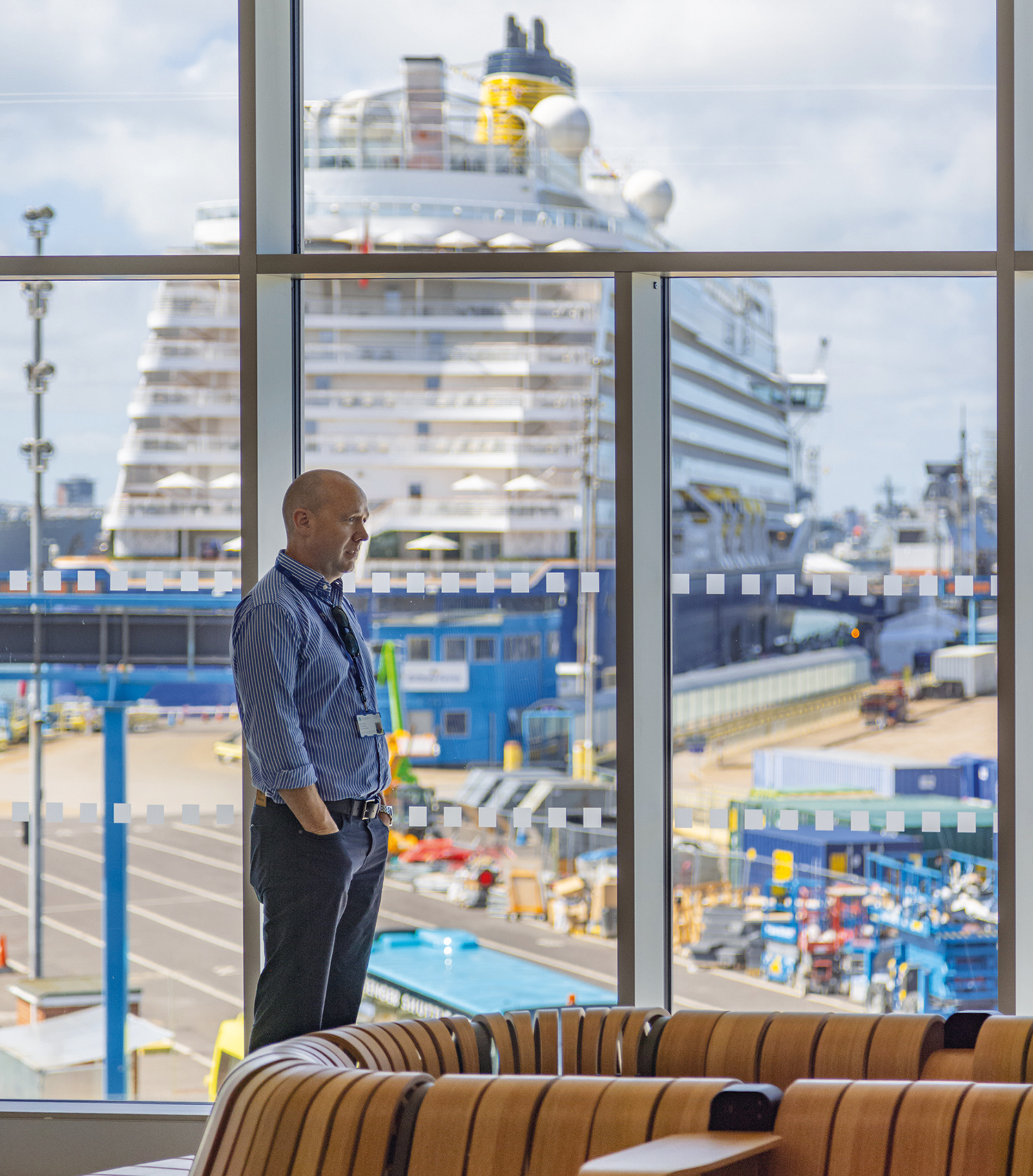
Jason Ellam-Brown MCIOB, principal construction project manager at Portsmouth City Council, shares how Portsmouth International Port’s new Terminal Annexe is both an exemplar for sustainability and a demonstration of the success that comes when client and contractor values are aligned.
Portsmouth International Port is positioning itself as a trailblazer with its aim to be carbon neutral by 2030. Its new passenger terminal extension – ‘the annexe’ – is a beacon of environmental sustainability.
Built by contractor Knights Brown, it is one of the UK’s first levelling up projects – built with £11.25m funding from the Department for Levelling Up, Housing and Communities.
At the heart of the eco-friendly design is a seawater heat exchanger. This system utilises the abundant and free energy source of seawater to heat and cool both the existing terminal and the annexe.
The roof of the terminal is adorned with 130kWh photovoltaic panels. These not only run the building but also charge batteries with excess energy. This setup ensures a continuous power supply even when the sun takes a break.
The annexe has embraced a time-tested fifth century Persian technology with a passive ventilation system integrating wind catchers complemented by solar fans.
Warmth from the waters
Energy-efficient underfloor heating, powered by the seawater heat exchanger, ensures a cosy atmosphere.
The nearly 1m-thick double insulated and cavity walls stand as guardians against energy loss. Even the paint on the walls contributes to the environmental goals. It doesn’t emit toxic fumes – it consumes carbon.
Meanwhile, the intelligent lighting system, sensitive to Lux levels and movement, ensures energy is used only when necessary. The 300 sq m of internal and external green walls also absorb carbon dioxide, emit oxygen and create a serene environment.
Innovatively, the terminal uses seawater for toilet flushing. This conserves fresh water and ties the building’s operations to the natural resources at its doorstep.
Foundationally sustainable
The use of driven piles and ground-bearing slabs saved on waste disposal. This underscores a commitment to minimising environmental impact. A high level of airtightness ensures maximum energy efficiency. Keeping internal and external environments separate significantly reduces energy loss.

The terminal annexe isn’t just carbon-neutral, it’s carbon-positive. It produces more energy than it uses: rainwater harvesting systems water and nourish the living green walls.
Roof lights reduce the need for artificial lighting and connect the interior space with the natural world.
Collaboration and communication
The symbiosis between client and contractor is paramount. This was vividly illustrated in my experience leading the development of the Terminal Annexe. Amid a landscape of diverse challenges, success hinged on effectively harnessing construction management skills when both client and contractor are chartered construction managers whose training aligns. (The contractor contract manager was Matthew Spiller MCIOB.)
Key to this was managing the nuanced communication among team members, both in remote locations and within organisations possessing divergent goals. The project demanded meticulous coordination of a diverse workforce. This was not just about disseminating information, but fostering a culture of transparency and swiftly resolving misunderstandings.

The project navigated competing priorities and inherent conflicts between public body sensibilities and the profit-driven ethos of contracting businesses. We bridged these divides through team-building sessions and workshops, creating a unified front despite differing perspectives.
Managing time and resources
Efficiency was key in managing time and limited resources, especially crucial in a local authority context. This involved ongoing assessment of team performance, aligning tasks with capacities and ensuring everyone was working to their full potential. Regular feedback and performance improvement strategies agreed in team-building workshops were integral to this.
Building an environment that valued diverse perspectives was crucial. Recognising each team member’s unique strengths – their ‘superpower’ – was a cornerstone of our approach.
As the managing lead, my role entailed making informed decisions promptly, considering inputs from team members and stakeholders. The ability to be dynamic and adaptable was a constant requirement.
Integrating the team into an operational port environment demanded a range of leadership skills. Trust was the foundation of our team dynamics, cultivated through regular one-on-one and all-team meetings, emphasising the importance of collaborative planning.
The project is a testament to the power of effective construction management, showcasing how MCIOB client and MCIOB contractor collaboration can overcome diverse challenges to achieve success.
View a timelapse of the build at www.linkedin.com/in/ellam-brown and a YouTube video.











